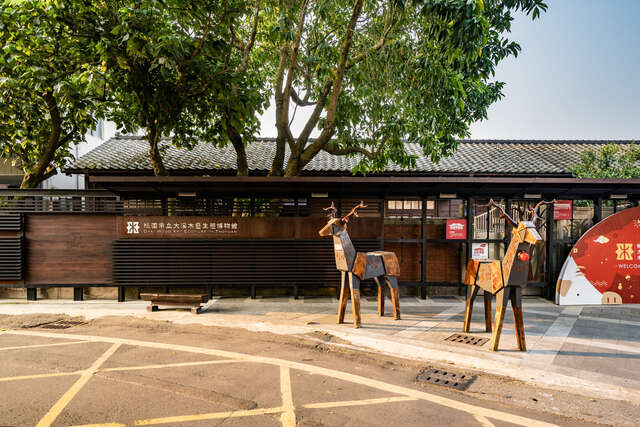Daxi Wood Art Ecological Museum - Daxi Historical Museum Introduction
The Daxi Historical Museum is believed to have been built during the Japanese era between 1937 and 1940 (Showa 12 to 15) and is classified as a type D civil servant residence, part of the historic dormitory complex for police personnel in Daxi. The building features a layout of four interconnected units, hence its name "Four Connected Units." The concrete rooms added at the back were constructed post-war to meet the needs of residents, reflecting the living conditions from different periods. It not only witnesses nearly a century of police governance and changes in Daxi but also records the life trajectories of its residents over various eras. In 2012, it was registered as a historical building, and after renovations, it became a public museum for the Daxi Wood Art Ecological Museum. During the renovation, some original materials and signs of former residents' usage were specially preserved. The Daxi Historical Museum is positioned as a permanent exhibition hall for the Daxi Wood Art Ecological Museum, themed "The Life and History of Daxi People," combining the memories of local residents within a broader historical context to narrate how Daxi developed into a culturally rich old town. Besides static models and artifact displays, there are dynamic audiovisual presentations and interactive games. In the future, the museum will continue to engage residents in various research and curatorial efforts, integrating different local histories, periodically adjusting and changing stories under various themes, making the Daxi Historical Museum a base for narrating the stories of Daxi people. The exhibitions are divided into seven major themes: "Originating from the Dahan River," which explores how Daxi developed into a prosperous city through its geographical environment and industries; "Who Lives in Daxi," showcasing the diverse communal life of Daxi people across different periods; "Cultural City Builders," highlighting notable figures who contributed to Daxi’s development, including Lyu Tiezhou and Feng Feifei's remarkable contributions to cultural education; "Industrial Cooperation," featuring an exhibition of artisans in collaboration with the craftsperson’s museum, shaping the culture of Daxi’s wood art industry from various perspectives; "United in Purpose," tracing the community-building efforts that began two decades ago, igniting local participation in public affairs and concern for local cultural and historical memories that continue to this day, and within the "Spirit of Cooperation for Daxi's Future" theme, embodying hopes for Daxi’s future. Additionally, "Daxi People Tell Stories" will feature small exhibitions that reflect different thematic stories of Daxi through the unique life histories of each resident. (Source: Daxi Wood Art Ecological Museum) For details on guided services, please visit the official website of the Daxi Wood Art Ecological Museum.

































